Why? Well, it seems that their former unlimited space for all users is now limited, and they've also decided to get rid of the old uploader function, which was the only one that I could use easily. The files on my camera are .JPGs, whereas photobucket only recognizes .jpgs... And their new uploading window comes up much wider than my screen.
Anyways, enough of that. I did manage top upload the pictures of my latest model, a fiddler crab, based on Brian Chan's model. Yes, another submission for the
Complex model in less than 30 steps challenge. It seems that I had missed something in the rules, and step doesn't mean step for this challenge, so I had to withdraw my Ryuzin. Anyways, this abides by the rules and I based the legs on the legs of another contestant's scorpion. It actually doesn't have legs, just a supporting strip where the legs would be. Here is my CP:

The claw section is pretty straight forward, all it needs is a bit of thinning and shaping. For the body, you can fold out the flaps on either side underneath and then shorten the length to make the legs. A bit of rounding a a pleat to make it a bit more 3D, and you end up with this:


 The middle point can be open-sinked (open-sunk?) to make feet and the bottom right hand corner makes the color changed belly. The eyes and beak in the top left corner are also color changed, and the wings can be folded however you like. Here id my model. Good luck! I hope to fold something(s) for the holidays.
The middle point can be open-sinked (open-sunk?) to make feet and the bottom right hand corner makes the color changed belly. The eyes and beak in the top left corner are also color changed, and the wings can be folded however you like. Here id my model. Good luck! I hope to fold something(s) for the holidays.

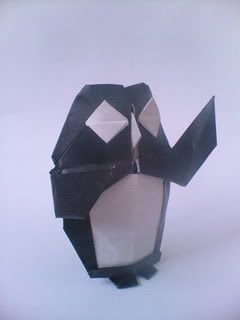



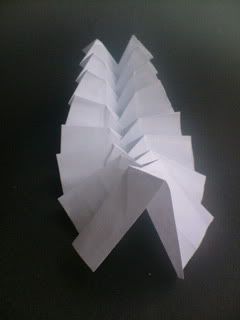






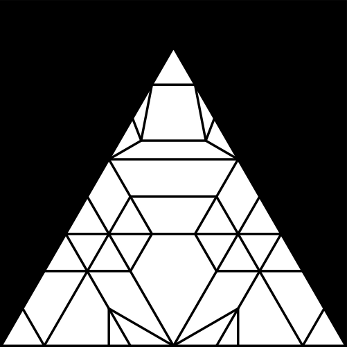 I'm glad I found Inkscape's axonometric grid function a while ago, otherwise it would have taken me a lot longer to draw the CP. The CP ends up with the four legs, large head and a small tail. You can sink and unsink the tail, and fold the legs down and use a couple of pleats on the shell so that it has a more 3D shape. A couple of pleats on the head will do the same thing. I think that I might try diagramming this model.
I'm glad I found Inkscape's axonometric grid function a while ago, otherwise it would have taken me a lot longer to draw the CP. The CP ends up with the four legs, large head and a small tail. You can sink and unsink the tail, and fold the legs down and use a couple of pleats on the shell so that it has a more 3D shape. A couple of pleats on the head will do the same thing. I think that I might try diagramming this model.

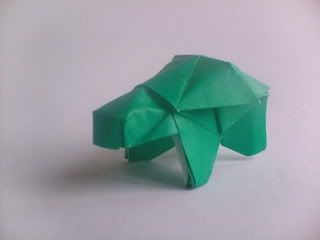


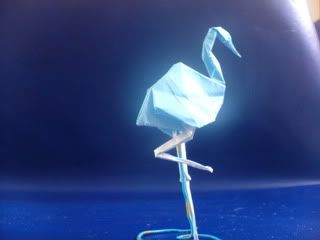







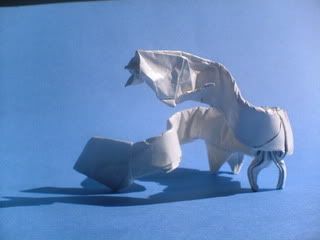
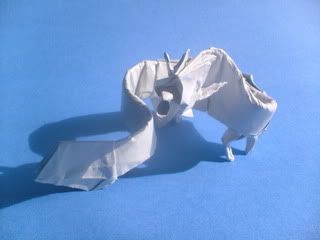


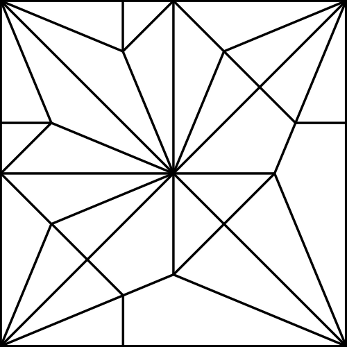 As you can see, it is very simple and I guarantee that I have seen the CP somewhere before. After folding the base, thin the entire sections on either side of the arms with rabbit-ear folds. Shorten the tail and inside reverse fold it, and then just add the details. The kangaroo should end up something like this one:
As you can see, it is very simple and I guarantee that I have seen the CP somewhere before. After folding the base, thin the entire sections on either side of the arms with rabbit-ear folds. Shorten the tail and inside reverse fold it, and then just add the details. The kangaroo should end up something like this one:


 I'm quite happy with how the gorilla ended up seeing as it was meant to be a completely different ape. The collapsed based already looks apish, and could probably be used to make a chimp or bonobo. To make a gorilla, you just need to move the legs so that they're facing down, and then shape the face and body and add details such as hands and feet. Here is what you can end up with:
I'm quite happy with how the gorilla ended up seeing as it was meant to be a completely different ape. The collapsed based already looks apish, and could probably be used to make a chimp or bonobo. To make a gorilla, you just need to move the legs so that they're facing down, and then shape the face and body and add details such as hands and feet. Here is what you can end up with:


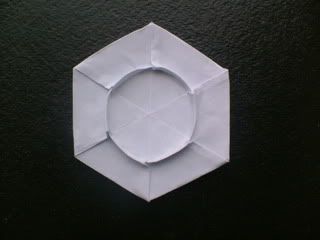









 It isn't much, so it shouldn't be too hard to collapse. The top section of the CP make the antlers, and the bottom part is the head including ears. The antlers can be color changed, but you have to be careful not to rip the paper. Good luck!
It isn't much, so it shouldn't be too hard to collapse. The top section of the CP make the antlers, and the bottom part is the head including ears. The antlers can be color changed, but you have to be careful not to rip the paper. Good luck!





